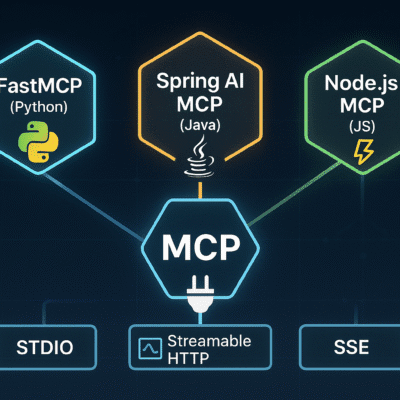🚀 Quick Dive: IBM’s MCP vs API video pits two integration patterns—generic REST APIs and the purpose‑built Model Context Protocol (MCP)—against the real‑world demands of AI agents. APIs give you fine‑grained, service‑specific power but force each agent to hard‑code endpoints. MCP wraps those same services behind a single USB‑C‑style socket, so agents can discover data sources and invoke tools at run time without new code. Choosing isn’t binary: many teams layer MCP on top of existing APIs. Below, three questions help you map the right pattern to your scenario.
🤔 1. MCP vs API – Do you want discoverability or stability at the call site?
| Option | What the agent sees at run time | Ideal when… | Hidden trade‑offs |
|---|---|---|---|
| MCP server 🔍 | tools/list → weather.get, calendar.create, db.query | You’re shipping agents that must pick up new capabilities without redeploy | Server builder must curate a JSON‑RPC catalog and keep scopes secure |
| Direct REST API 🏷️ | Hard‑wired GET /books/{id}, POST /loans | The endpoint set is stable and version‑ed; teams already document it | Every new tool means new client code and re‑deployment |
Scenario check for MCP vs API
Internal data platform—hundreds of micro‑APIs change monthly. Expose them once behind an MCP catalog so the agent auto‑learns new tools.
Payment gateway—regulatory audits require pinned endpoints. Stay with direct REST to freeze surface area.
🔄 2. How many layers of indirection can your stack tolerate?
🍰 Layer‑cake model (MCP ➜ REST ➜ service)
- Agent calls
tools/call → "send_invoice" - MCP server translates to
POST /payments - Service executes and replies
Good for
- Mixed language stacks—you publish a single MCP schema, no matter whether the backend is REST, GraphQL, or gRPC
- Late‑binding security: you can swap a sandboxed test API for prod without touching the agent
Watch for
- Double JSON encode/decode on every hop
- Two policies to secure (OAuth on REST + scope checks in MCP)
🛣️ Direct‑path model (Agent → REST)
Fewer hops, less latency; but every service swap forces client updates.
⚙️ 3. Which execution pattern matches your scalability and trust goals?
| Pattern | Topology | Typical use‑case | Governance knobs |
|---|---|---|---|
| USB‑C‑style hub 🖇️ (one host, many MCP servers) | Agent host (desktop app or gateway) maintains multiple JSON‑RPC sessions | Claude Desktop reading local files 📂, hitting Spotify 🎵, and Jira 🗂️ in the same chat | Host enforces global rate‑limits and credential vaults |
| Point‑to‑point API calls 🔌 | Agent fires HTTP calls directly to each service | Serverless function that only needs one SaaS API | Managed by per‑service API keys and WAF rules |
| Hybrid 🧩 (MCP for fast‑changing tools, REST for critical ones) | Agent discovers general tools via MCP but still calls payments API directly | E‑commerce bot creating orders, then handing off to a hardened payment microservice | Split duty → MCP scopes stay broad; REST keys stay narrow |
Scenario check
- Large‑scale multi‑tenant SaaS: put a thin MCP gateway in front of every user tenant; rotate internal REST endpoints freely.
- On‑prem bank AI assistant: keep customer / account APIs REST‑only for auditability; expose less‑sensitive utilities (FX rates, holiday calendars) through MCP for agility.
🏁 MCP vs API – The bottom line 🔑
- MCP ≈ USB‑C: one socket, runtime discovery, AI‑friendly schemas.
- REST API ≈ bespoke cable: direct, battle‑tested, but static.
- They are complements, not rivals—wrapping an existing REST API in an MCP server lets agents stay agile while ops teams keep their proven services.
- Choose your mix by asking: Do my agents need hot‑plug tools? Can I afford an extra hop? Where must compliance freeze the contract?
Answer those, and the right integration path—straight REST, pure MCP, or a hybrid—reveals itself.





